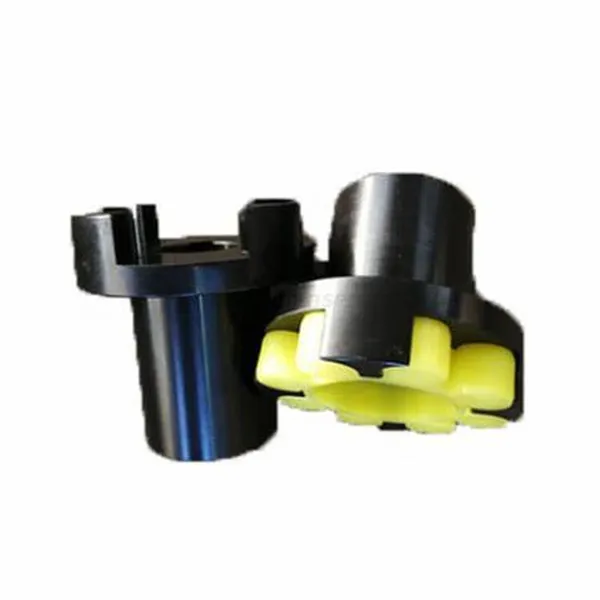Real Estate
Jaw Coupling Manufacturers

Features!
Structural Features of Jaw Coupling
The elastomer of the spider can be made in different materials and hardness, which allows the user to customize the coupling to serve their application best. Considerations for elastomer selection include the ability to dampen vibration, the ability to handle misalignment, operational temperature range, speed of equipment, and chemical conditions.
Services
Reasons to Consider Using Jaw Couplings
Jaw coupling hubs and spiders connect two drive shafts to transfer power while absorbing shock and vibration and accommodating misalignment. This helps to protect the components from damage. Jaw coupling assemblies consist of two hubs and a spider insert with a jaw from each hub fitted alternately with the lobes of the spider. Spider inserts can be replaced when they become worn or damaged. The coupling will continue to operate even if the spider insert fails, allowing the drive system to be properly shut down before replacing the spider.

Zero-Backlash Design

Low Replacement Cost

High Customizability

Fail Safe Design
Products
Featured Jaw Couplings for Sale
XL Type High-Quality Jaw Flexible Couplings
Jaw couplings are compression coupling that controls motion by transmitting torque and damping vibrations that could cause damage to other system components. They are composed of a polyurethane-based elastomeric part called a spider that joins two hubs made of sintered metal, aluminum, standard steel, stainless steel, bronze, or iron. These three parts are press-fitted together, with a jaw from each hub fitting into the elastomeric element’s grooves.
AL Type Aluminum Jaw Coupling
AL-type aluminum jaw coupling, the main body is made of high-strength aluminum alloy. It’s working occasions with frequent starting, forward and reverse rotation, medium and high speed, medium torque, and high reliability, such as metallurgy, mining, chemical industry, lifting, light industry, textile, water pump, fan, etc. Suitable for servo motor, stepper motor, spindle drive, lifting platform, machine tool drive, and gearbox motor.
H Type Highest Torque Jaw Couplings
SW Type Jaw Spider Flexible Coupling
SS Type Stainless Steel Curved Jaw Couplings
L Type Standard Jaw Coupling
Pumps
Gearboxes
Compressors
Blowers
Video
Watch Jaw Coupling Videos
FAQ
Knowledge About Jaw Coupling
The Working Principle of Jaw Coupling?
In jaw couplings, the element is loaded in compression between the jaws of mating hubs. These jaws operate in the same plane, with the driving hub jaws pushing towards the driven hub jaws. Legs of the elastomeric spider transmit and cushion the force between the driving and driven jaws by being compressed between them.
This contrasts to shear-type couplings, in which driving and driven hubs operate in separate planes, with the driving hub pulling the driven hub through an elastomeric element suspended between them. Here, the element transmits and cushions the force between hubs by being stretched between them.

Operating Temperature Range and Material of Jaw Coupling?
The involute teeth of the elastomeric inserts are crowned in order to avoid edge pressure on the tooth flanks and so avoid undesirable axial thrust. The puncture proof spider coupling can be loaded extremely high since the elastic elements are submitted to compression and not to bending moments of force. The elastomer gear ring, made of a newly developed polyurethane of various degrees of shore hardness, has important advantages in comparison with the standard polyurethanes. It is non-ageing, with resistance against hydrolysis (can be used in tropical conditions), non-abrasive, has a high self-damping effect and is also resistant to oil and ozone. It can be used with temperatures ranging from -40°C to +120°C.
There is a chart below to show the characteristics of each material commonly used for jaw couplings:






